Tui in winter: features of preparation and methods of shelter
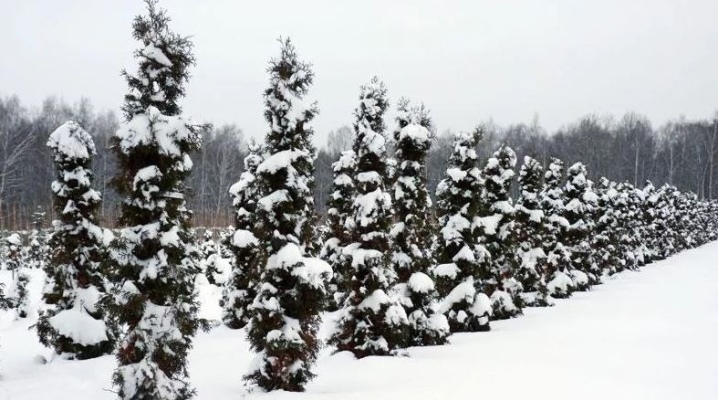
Beautiful and graceful coniferous trees - thuja - firmly endure frost and are unpretentious in care. However, some varieties, for example oriental ones, need additional protection in winter. In addition, young trees can be damaged by snowfall and gusty winds and be affected by direct sunlight. In this regard, the wintering of thuja requires a separate discussion.
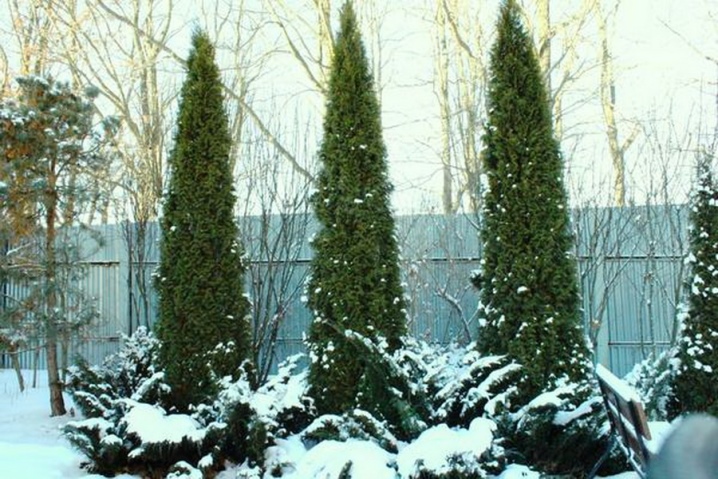
Description
The graceful evergreen "beauty" is called the "tree of life". It has positive energy and a pleasant aroma. Thuja belongs to the cypress family. It is not known for certain where exactly the amazing tree appeared. According to one version, his homeland is America. Today, there are 5 main types of evergreens (western, Chinese, eastern, Japanese and folded). They differ in shape, height and other external features. Trees of amazing beauty are “long-livers”. The plant grows and develops over the course of 100–150 years. The negative factors that lead to the death of the plant include:
- low temperatures;
- lack or excess of moisture;
- lack of feeding;
- pests.
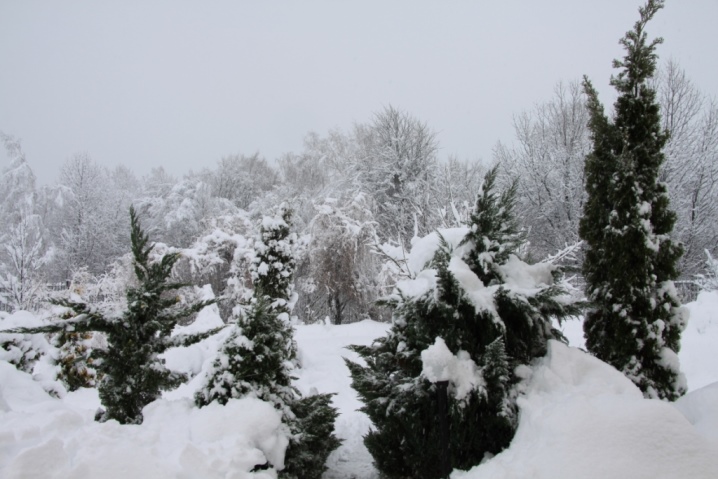
Tui do not require careful maintenance, however, in winter, some varieties can freeze out. A tree that has not wintered well will lose its presentable appearance and amazing aroma. The preparation of the thuja for the cold weather begins in the fall.
Reasons for hiding
As a rule, young immature trees need "winter clothing". Their branches are still rather weak, and the shoots are thin. They can break under the weight of snow. In addition, the root system of an annual thuja, propagated by cuttings, is on the surface - a harsh snowless winter will destroy it. Also, the adhesion of snow leads to a curvature of the crown and sprinkling of the needles. Burns are another negative factor in the wintering of thuja. If the crown is exposed, then the sun's rays begin to stimulate the growth of shoots, and the roots of the plant, meanwhile, are in "hibernation". As a result:
- the color of the thuja changes;
- needles fall off;
- shoots lose their usual shape.
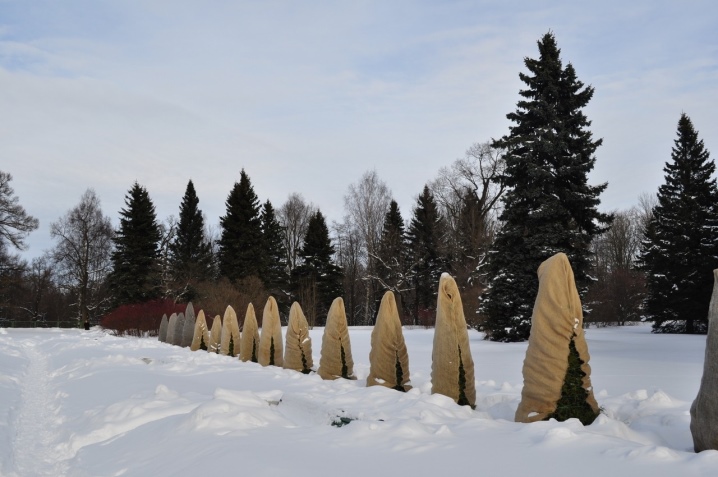
Thus, the right shelter will help the tree survive the winter outdoors.
Choice of materials
Thuja bags for the winter will not be difficult to purchase. There is a huge selection of covering materials on the modern market. First of all, you should pay attention to:
- burlap;
- gauze;
- tulle;
- cotton;
- polypropylene bags;
- roofing material;
- polymer mesh;
- kraft paper.
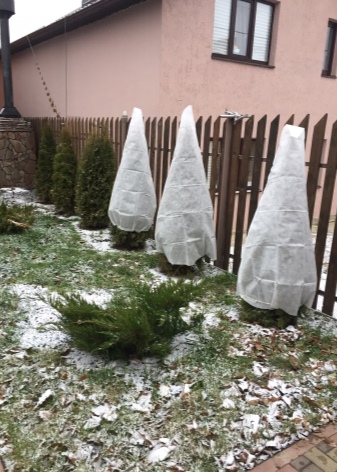
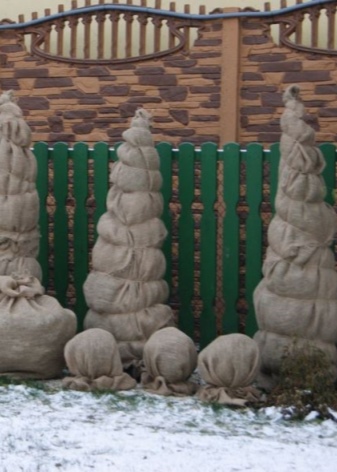
Experienced gardeners advise against covering evergreen shrubs with cellophane or polyethylene. These materials create a "greenhouse effect" that leads to the death of plants. Note that it is important to use non-woven materials that are breathable and protect from direct sunlight. It is advisable to purchase white bags.
In addition to protecting the crown, it is necessary to take care of the wintering of the thuja roots. There are several preparation options.
- The soil is mixed with the foliage. Such a "blanket" perfectly retains moisture at the root system, and humus will be an excellent food for the plant.
- Mulching with peat, sawdust or coniferous bark. Layer thickness - at least 10 cm.
- In addition, spruce branches are placed on the organic layer, which is removed with the arrival of heat. This moment is especially important for young trees, since their root system has not yet matured. Lapnik is able to protect the plant from "severe" frosts. Also, before warming, the thuja must be watered abundantly.
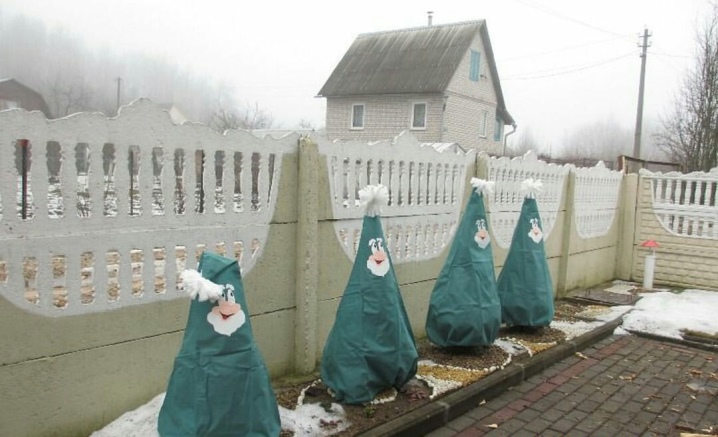
The ways
Preparation of thuja for winter begins in the fall, before the first frost and snow. The simplest option is bags of a suitable size, which are fixed with twine. An adult plant with strong roots is enough to wrap with a strong rope. Another way to hide high varieties of thuja involves the construction of a frame. It is not difficult to make it - it is enough to drive in three metal pins over the top of the thuja (crosswise) and fasten. Then cover the frame with a non-woven fabric. Special shields that create shade will perfectly protect from the spring sun. Low-growing shrubs can be covered with wooden boxes. Snow from "insulated" trees must be shaken off periodically.
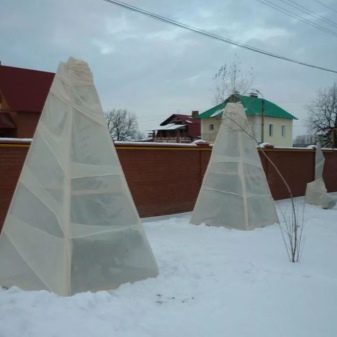

Many gardeners plant evergreen thuja in tubs. In winter, the plants are taken indoors or covered with non-woven fabrics. As a rule, a drain is installed at the bottom of the container, which is great for keeping moisture in the pots. It is enough to water the plant and cover it with a cotton bag, securing it around the trunk with wire or rope. It is important to know that a coniferous tree cannot survive the winter in a dark and damp room. In winter, certain conditions are necessary for thujas growing in tubs.
- The optimum temperature of the content should not exceed +5 degrees. If the thermometer in the room drops to -3, then the pots are additionally insulated.
- Regular watering. In winter, the soil in the tubs should not be allowed to dry out. This will lead to yellowing and shedding of the needles of the tree.
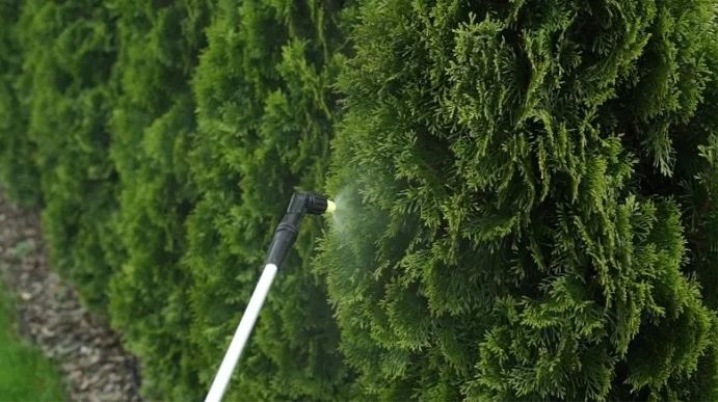
Also, thuja in containers winters well on a glazed balcony. Taking care of the plant will not be difficult. The tree will be able to receive the necessary lighting and fresh air. Before the onset of frost, the plant is abundantly watered and wrapped with kraft paper. During the winter, water is periodically poured into the bowls under the pots. The permissible room temperature should not exceed +12 degrees.

Thuja after winter
With the onset of spring, many gardeners observe an unpleasant picture: the leaves of the thuja have become brown, and the branches are dry. This can be due to a number of reasons.
- High alkali content in the soil. Tui grow in light, slightly acidic soils. It will be possible to identify this reason using a special indicator test (sold in shops for gardeners).
- Sunburn. Probably, the shelter was chosen incorrectly, as the material was transmitting ultraviolet rays. A weakened tree can be damaged by insects or get sick with fungal diseases. Treatment of the crown with fungicides will help restore the plant. However, the treatment process will be long (2-3 years).
- Also, improper planting can cause shrinkage. The tree can be easily "moved" to another location.
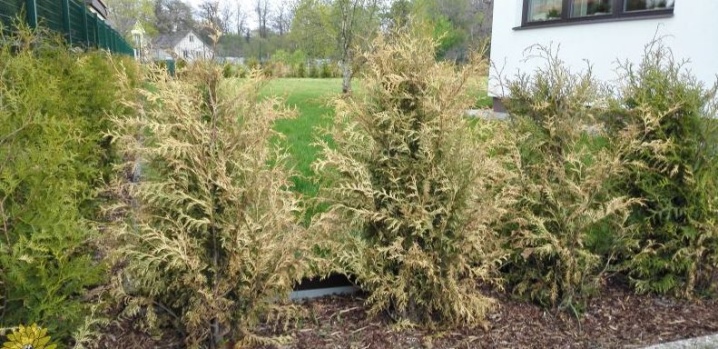
For information on how to care for thuja in winter, see the next video.



































































The comment was sent successfully.